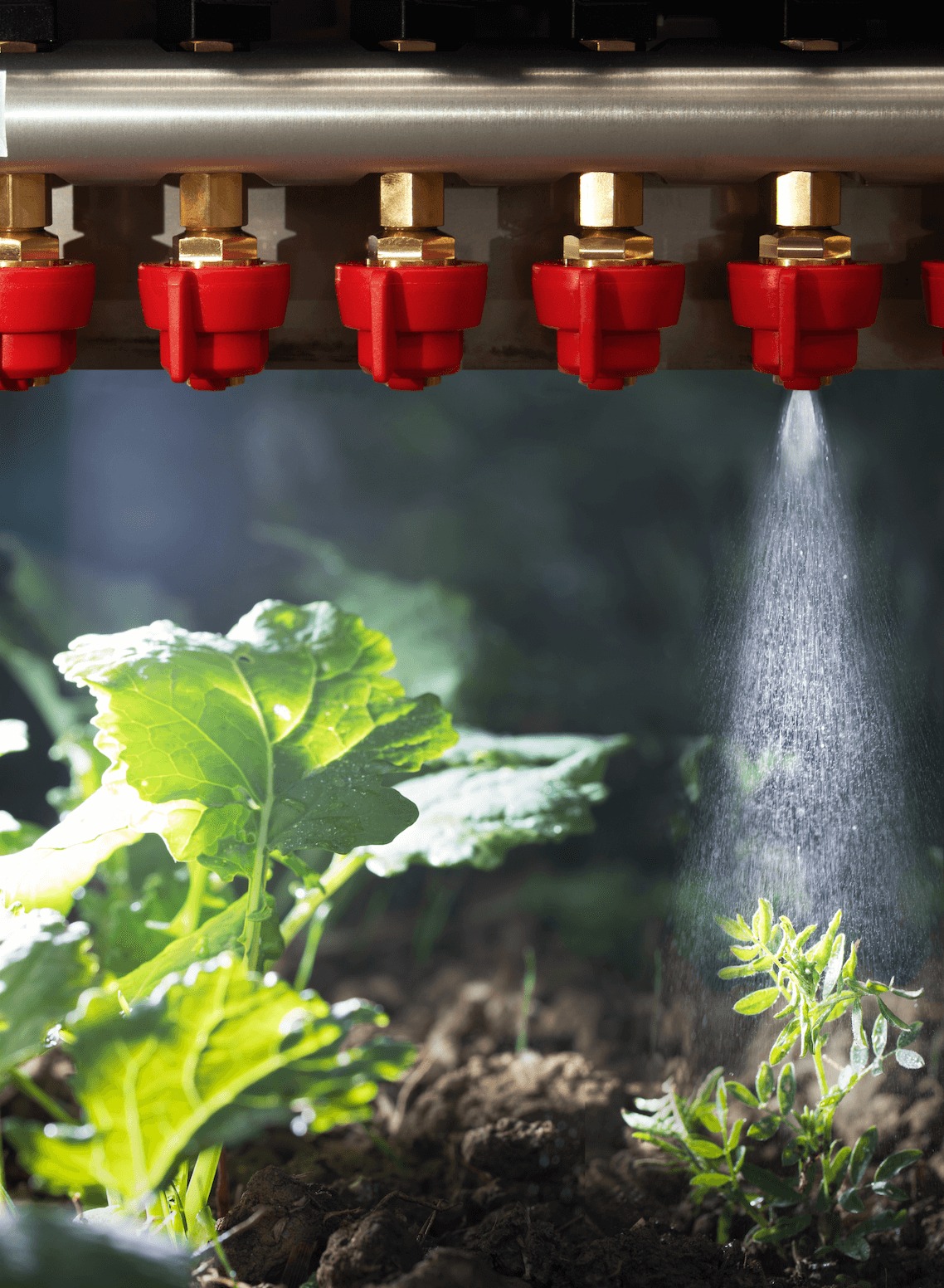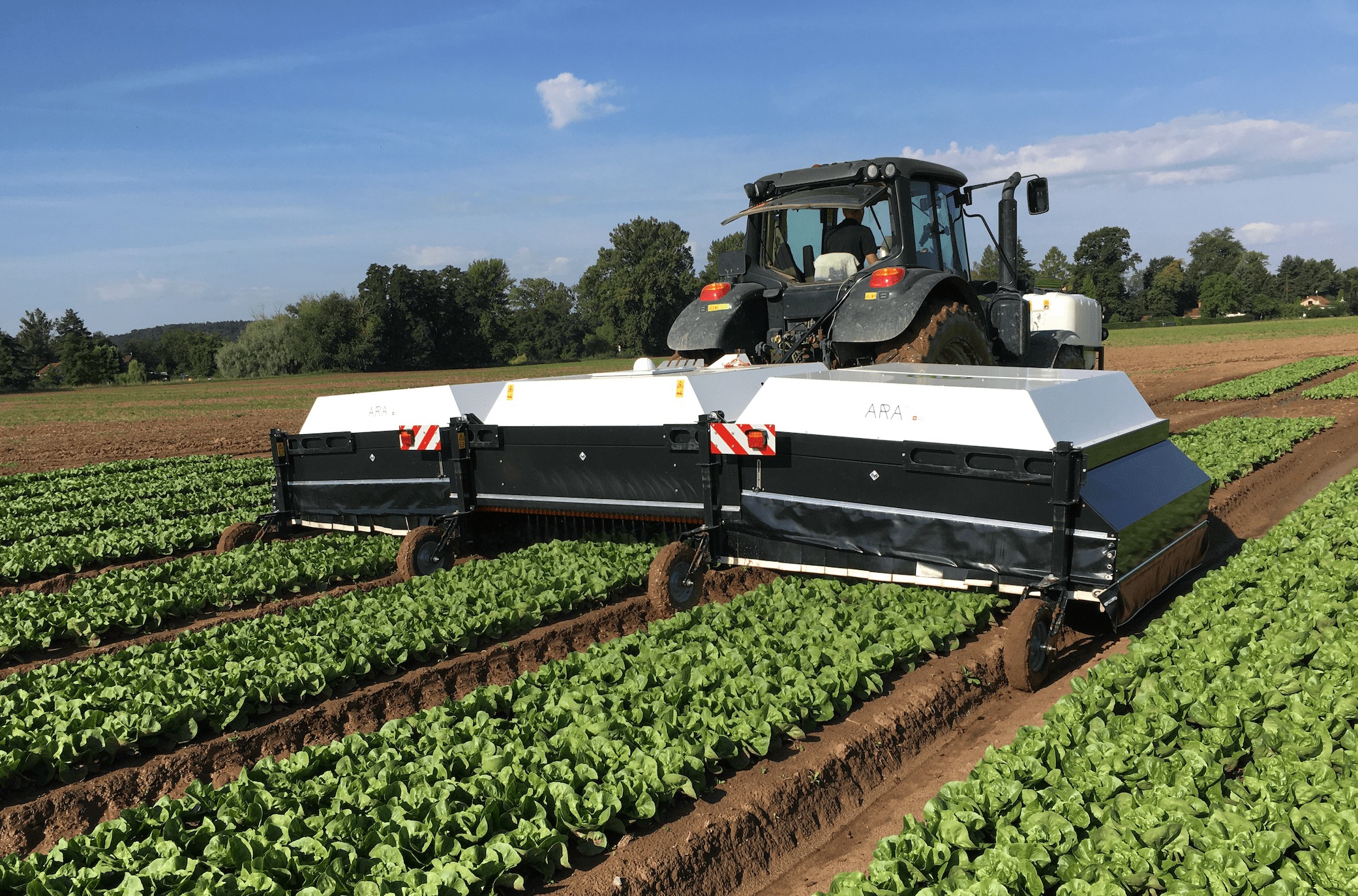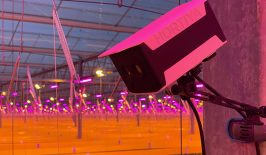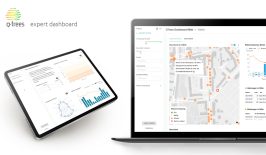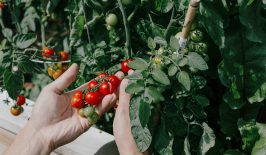Weed removal and pest control to protect crops keep both urban gardeners and farmers with thousands of hectares of land busy. While some pluck weeds from small herb fields and pick slugs from lettuce, large agricultural areas are usually treated with chemicals sprayed by tractors or even aeroplanes. However, this large-scale approach has fatal consequences for soils, biodiversity and people. The sprayed pesticides are blown away by the wind and can spread to crops that are harvested later.
And they are washed into the soil and waterways. Some pesticides also harm bees and other insects – a disaster for the natural pollination of plants. So new solutions are needed to eliminate weeds and pests in a more environmentally friendly way. In addition to sustainable farming practices that completely dispense with toxins, precision agriculture – and with it farm robots – is also continuing to develop.
Weed control, spray by spray
It is called ARA and uses small nozzles to distribute microdoses of pesticides to unwanted or pest-infested plants. The special trailer recognises the affected plants using cameras and image recognition. The Swiss company Ecorobotix developed ARA with the aim of reducing the use of chemicals in agriculture. The ARA sprayer is primarily used to control weeds in tall vegetable crops. However, it can also be used to apply other plant protection products in a targeted manner. ARA has been on the market since 2021 and is sold in EU countries, Canada, South and Central America and the USA.
According to the company, the use of pesticides can be reduced by up to 95 per cent with the precise spraying device. Farmers who use ARA also confirm the results. “We sprayed 20 hectares with a total of 227 litres. Normally, we would use around 3,785 litres to cover the entire field,” says Cody Anderson from L & L AG PRODUCTION in the USA, for example.
Small farm robots conquer the fields
Small Robot also wants to reshape agriculture with the help of robots and AI. The company is focussing on small, autonomous robots. Tom is already in use. The orange farm robot on four wheels digitises the field independently with the help of a camera and image recognition. Tom identifies, localises and logs individual weeds and crops. This information is then fed through a complex AI algorithm to create a “treatment map” that shows farmers exactly how much pesticide to use and where to apply it.
The treatment maps can be integrated into spraying equipment to apply fertilisers with variable dosing and to apply pesticides selectively. The so-called PerPlant view thus makes the widespread use of chemicals obsolete.
According to Tom, up to 90 percent fewer pesticides and 24 percent less fertiliser are required with the help of Tom’s maps. In addition, the soil compaction caused by the use of heavy tractors is significantly reduced.
“Our robot Tom can recognise every emerging plant, water droplet, worm burrow and early disease outbreak, helping farmers to know exactly what to treat and when, with minimal use of chemicals,” says Ben Scott-Robinson, CEO of the Small Robot Company. Robinson is convinced that this is a world first for scientific research and could fundamentally change plant science.
Weeds are relative
A “weed” is often defined as any plant that grows where it is not wanted. However, actual weeds are more narrowly defined. Around three per cent of all known plants – around 8,000 species – are described as weeds. These plants are problematic for agriculture because they reproduce rapidly and their seeds survive for a long time.
In nature, so-called weeds often have positive effects. The plants stabilise soils and provide habitats and food for wild animals and insects.
In future, Rootwave’s electric weed killer is also to be integrated into the intelligent farm robots so that environmentally harmful pesticides can be dispensed with completely.
RootWave “zaps” the weeds away
The British start-up RootWave is working on a post-chemical future for farmers. To this end, the company is focussing on weed control using electricity.
The principle behind RootWave’s technology is simple: instead of using environmentally harmful pesticides to kill the weeds, they are given targeted electric shocks. The electrical resistance of the plant converts the current into heat energy – which causes the water in the plant cells to “boil”. The plant decomposes from the inside out and returns its nutrients to the soil. RootWave refers to this process of its technology as “zapping”.
“Many weed varieties are becoming more resistant and the chemicals are becoming less effective against them,” RootWave Managing Director Andrew Diprose told RESET. In addition, increasing regulations on the use of pesticides and consumer concerns are increasing the urgency to find a more environmentally friendly solution. As the electric weed killer is non-chemical and does not affect the soil, it is compatible with both organic and regenerative farming systems.
More sustainability through the EU’s “Farm to Fork” strategy
The demand for weed robots and other ways to save pesticides could increase significantly, as changes are also on the horizon at a political level. The agricultural and food strategy published by the European Commission on 20 May 2020 as part of the European Green Deal – also known as the
also known under the working title “Farm to fork (F2F)” – aims to make the EU’s food systems more sustainable.
A central element is the EU reduction target for pesticides. By 2030, the overall use and risk of chemical pesticides is to be reduced by 50 per cent and the use of particularly hazardous pesticides by a further 50 percent.
Open-source farm robots for small businesses
Both ARA and TOM are already out in the fields. However, farm robots are not affordable for all farmers. The prices for the hardware vary depending on the country. ARA is sold for between 200,000 and 300,000 US dollars, depending on the country. There is also an annual subscription fee for using the AI technology. Even though ARA claims to be quite affordable compared to other precision technologies, the entry threshold is not insignificant. Subsidies, which are available in some countries, cannot always compensate for this.
Projects such as Taylor Alexander’s Acorn are trying to make modern farm robots available to even the smallest farms. Alexander relies on open-source software and low-cost components such as single-board computers and electric motors. Alexander does not sell these himself, but instead, farmers can use the freely accessible construction plans to build the agricultural robot. The code can be obtained via the GitHub platform, while the required parts are offered for sale by Twisted Fields, a US research farm, for example. Incidentally, Acorn has another special feature: it looks like a table on four wheels – and can be covered with solar cells.
Sustainable agriculture requires comprehensive approaches
So there is hope that the new generation of farm robots will help to make agriculture more sustainable. It remains to be seen whether, in the future, it will mainly be autonomous robots modelled on Tom that will be out and about in our fields or whether we will still have tractors with sophisticated trailers. At Ecorobotix, at least, everything is still open. According to the company, it has developed the ARA sprayer as a trailer because the cultivation system is similar to what farmers are already familiar with. This should make the transition to new technologies easier. Perhaps the smaller robots will come here too …
But of course, new technologies are not the only solution. Smart crop rotation planning, biodynamic cultivation and sustainable approaches such as permaculture are key factors in reducing pesticides in the field.

